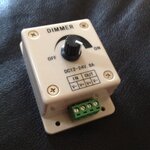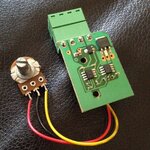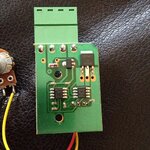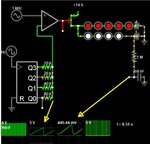resident gearhead
Newbie level 2
Noob here. I have some electronics experience but not much.
I'm looking to go from 2-3 volts to 12 volts over roughly 10-15 minutes. 4-6 amps at full power.
This is to power a strip of SMD LED lights for a 'sunrise wake up timer' to help me wake up more effectively in the winter months.
This is what I've found so far on instructables. This was designed for 5V but I believe it'll handle the power I'm looking at (12v @6a). Can I just wire up my 12v power and LED strip to this circuit as is, or should I adjust any of the components?
Also, what about adjusting the speed of the circuit? I assume I'd swap in a potentiometer in place of the 1M ohm resistor, but not sure of what components to use (most pots I see are only 10k ohm).
https://www.instructables.com/id/Sunrise-Alarm-Clock-1/step2/The-Circuit/

Thanks in advance for your help!
I'm looking to go from 2-3 volts to 12 volts over roughly 10-15 minutes. 4-6 amps at full power.
This is to power a strip of SMD LED lights for a 'sunrise wake up timer' to help me wake up more effectively in the winter months.
This is what I've found so far on instructables. This was designed for 5V but I believe it'll handle the power I'm looking at (12v @6a). Can I just wire up my 12v power and LED strip to this circuit as is, or should I adjust any of the components?
Also, what about adjusting the speed of the circuit? I assume I'd swap in a potentiometer in place of the 1M ohm resistor, but not sure of what components to use (most pots I see are only 10k ohm).
https://www.instructables.com/id/Sunrise-Alarm-Clock-1/step2/The-Circuit/

Thanks in advance for your help!




